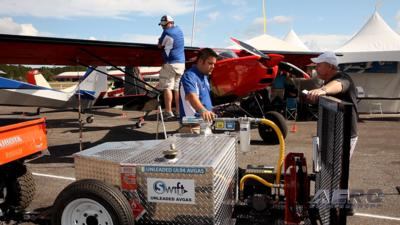Thu, Dec 30, 2021
Embattled Airports Being Forced to Remove 100LL for Branded Unleaded Gas
Santa Clara, California has continued its assault on general aviation operations in the vicinity, with the insistence of removing 100 low-lead fuel from sale in the two airports under its purview.

County Executive Jeff Smith said the county will not modify its approach, promising that it will be "lead free by January 1st." The move had piqued the attention of the FAA, who notified the county of an informal investigation under 14 CFR Part 13. The county was given 20 days to respond to the notice, but informal statements give the impression that the ban will go into effect December 31.
The FAA noted their plans to replace their fuel with a Smiths brand unleaded option, the company's 94UL. That fuel, while theoretically suited to a fairly wide variety of aircraft, still precludes the use of far more in the United States ecosystem. Those hoping to use the fuel will require a suitable STC for their particular aircraft, adding additional regulatory burden and cost to the average operator's already burdened pocketbook. The FAA's letter to the county warned of safety issues that would likely result from the change, as well as reiterated its commitment to remove lead from the aviation ecosystem. Those without suitable aircraft could leave their planes stranded at the airport, unable to refuel on the premises nor with enough to transit to another field. The agency has already rescinded federal funding on Reid-Hillview, with only San Martin receiving their money from the government purse. The threat of monetary abstinence remains one of the few sticks left on the table for an agency bereft
of carrots, and Santa Clara doesn't seem to care.

Local media sources quoted Barbara Lichman, a local aviation attorney, who said the FAA could try to exert authority over the issue, but “if (the county is) not afraid of losing federal funds, then I suppose they can just thumb their nose," leaving them with a legal battle to sort it all out. The fight wouldn't be new, as the agency listed a number of safety concerns aside from the fuel issue, ranging from improper landscaping that blocked airfield signage, faded signs and advisories, and a lack of timely cleaning that saw the buildup of fecal materials that could be a "significant hazard to the flying public". Lichman says they could likely have a case with the added safety complaints, saying “If they are running an airport that the FAA doesn’t deem safe, the FAA can come after them for punitive damages, assuming that there are dangerous problems not being remedied."
More News
Aero Linx: International Federation of Airworthiness (IFA) We aim to be the most internationally respected independent authority on the subject of Airworthiness. IFA uniquely combi>[...]
Ultrahigh Frequency (UHF) The frequency band between 300 and 3,000 MHz. The bank of radio frequencies used for military air/ground voice communications. In some instances this may >[...]
A Few Questions AND Answers To Help You Get MORE Out of ANN! 1) I forgot my password. How do I find it? 1) Easy... click here and give us your e-mail address--we'll send it to you >[...]
From 2019 (YouTube Edition): Learning To Paint Without Getting Any On Your Hands PPG's Aerospace Coatings Academy is a tool designed to teach everything one needs to know about all>[...]
Also: Sustainable Aircraft Test Put Aside, More Falcon 9 Ops, Wyoming ANG Rescue, Oreo Cookie Into Orbit Joby Aviation has reason to celebrate, recently completing its first full t>[...]
 ANN's Daily Aero-Linx (05.06.25)
ANN's Daily Aero-Linx (05.06.25) ANN's Daily Aero-Term (05.06.25): Ultrahigh Frequency (UHF)
ANN's Daily Aero-Term (05.06.25): Ultrahigh Frequency (UHF) ANN FAQ: Q&A 101
ANN FAQ: Q&A 101 Classic Aero-TV: Virtual Reality Painting--PPG Leverages Technology for Training
Classic Aero-TV: Virtual Reality Painting--PPG Leverages Technology for Training Airborne 05.02.25: Joby Crewed Milestone, Diamond Club, Canadian Pilot Insurance
Airborne 05.02.25: Joby Crewed Milestone, Diamond Club, Canadian Pilot Insurance




